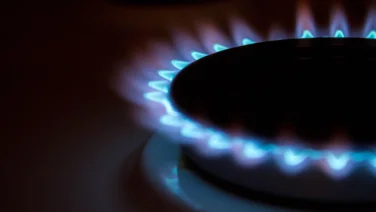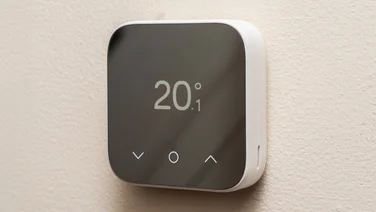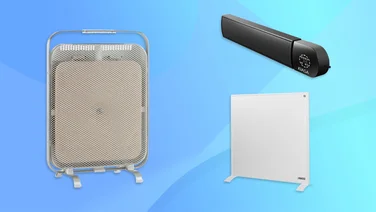To help us provide you with free impartial advice, we may earn a commission if you buy through links on our site. Learn more

In-roof solar panels are a neat, streamlined alternative to frame-mounted panels. Some people love the look of conventional frame-mounted solar PV panels, but others find them too big, bulky and heavy. Solar roof tiles are a beautiful alternative, but they’re expensive and lack efficiency. Could sleek, neat in-roof solar panels offer the best of both worlds?
Also known as integrated solar panels, in-roof panels sit flush with your roof tiles rather than being mounted on a frame on top. This gives them a streamlined appearance that many people prefer. The main downside is the extra hassle involved in installation. But unlike solar roof tiles, in-roof solar panels don’t cost much more than frame-mounted panels, and they’re almost as efficient.
Read on for our full guide to integrated solar panels, including all you need to know about costs, installation and planning permission.
Get a free quote for solar panels today
To find the best prices for solar panels of all kinds, use our free quote-finder tool and we’ll put you in touch with helpful specialists.
READ NEXT: Solar roof tiles: Turn your roof solar
What are the advantages of in-roof solar panels?
Besides the long-term financial and environmental advantages of switching to solar for your home, integrated solar panels have an awful lot going for them
Aesthetics: Conventional solar panel arrays are not to everyone’s taste, and there will be people – such as your neighbours, or people you want to sell your house to one day – who prefer the smoother look of an integrated solar roof.Light weight: In-roof solar panels replace your roof tiles and don’t require a mounting frame, so they weigh significantly less than conventional panels. This makes in-roof panels a particularly good fit for older homes whose roofs may struggle to support a large frame-mounted solar array, causing maintenance issues down the line.
Low maintenance: The flush position of in-roof panels makes them more resistant to high winds, which can cause problems with solar panel frames. There are no visible brackets and other fixings for debris to build up in and around, and there’s no room for birds to nest underneath, so cleaning is much easier than with conventional panels.
Planning permission: Most homes don’t need special consent to install PV systems, but there are exceptions – such as listed buildings. In-roof solar panels are more likely to receive planning permission in these instances, because they are much less visually obtrusive or structurally heavy than frame-mounted panels. Some integrated systems can even be customised to match a roof’s colour, making them more favourable still to planning authorities.
READ NEXT: Our guide to cleaning your solar panels
How efficient are integrated solar panels?
In-roof solar panels are slightly less efficient than conventional solar panels. The efficiency rating of a typical solar panel is 20%, which means it’s capable of converting 20% of the sunshine hitting it into electricity. Integrated solar panels average about 17% efficiency.
The main reason for this is that integrated solar panels aren’t as well ventilated as conventional solar panels. As we explained in our roundup of the best solar panels you can buy in the UK, solar PV cells thrive on light, not heat. Frame-mounted solar panels keep cool because the air can circulate, but integrated panels are more liable to overheating, which reduces their efficiency.
The second reason is angle. With standard solar panels, it’s easy to install them on frame to achieve the best angle (35 degrees) and direction (south) to capture maximum light. But with integrated panels, they have to be installed at the angle and direction of your roof, which may not be ideal.
Looking for the best deal on solar panel installation?
How are in-roof solar panels installed?
The first big installation factor is your existing roof. If you’re having your roof re-tiled, then it’s the ideal time to have an in-roof solar system installed, because no retrofitting will need to be done. Developers building new houses will have the same ease of installation.
But for most of us, some retrofitting will be required, meaning that a section of roof tiles will need to be removed.
Your roof structure won’t have to be altered in any way, but the solar installer will need to have access to the felt and batten layer of your roof. This will be much easier with some roofs than with others, especially very old and unusually-shaped roofs.
Once the tiles have been removed, the installer fits plastic trays on top of the felt and batten of the roof. The next step is much the same as with any other solar array installation, with standard solar panels being laid in the plastic trays, and then wired to the system by an electrician.
Some panels have special weatherproof flashing in their frames to keep them securely in place and protected from the elements without the need for mounting trays. But in most cases, after the panels are fitted, the installer fills any gaps around them with tiles or slates to ensure that your new system is secure and watertight.
READ NEXT: How are solar panels installed?
How long do in-roof solar panels take to install?
If roof tiles need to be removed first, then an in-roof solar PV system may take up to two weeks to install. Compare that with the speed of installing a frame-mounted system, which can be done in two days.
READ NEXT: Our guide to solar panel grants
How much do in-roof solar panels cost?
Integrated solar panels used to be much more expensive than conventional panels, but now the costs are roughly the same (typically around £5,000-£6,000), provided you go for an in-roof system that uses standard solar panels.
This will be the case with most in-roof solar PV systems, such as those from GSE Integration. GSE is one of the most commonly used in-roof systems, versatile enough to fit most types of roof and compatible with most of the solar PV panels you can buy in the UK.
Costs rise if you need to have tiles removed before the system can be installed. In addition to the price of the panels themselves, GSE mounting systems cost around £100 per solar panel if the roof is at the felt and batten stage, and £200 per panel if tiles need to be removed. A reputable installer will be able to advise on the approach that best fits your roof and the system you want.
Bespoke in-roof solar PV systems cost much more than standard systems like GSE. Companies such as Viridian, SolFit and GB-Sol use panels designed and built specifically for in-roof arrays, including ‘full roof integrated systems’ that cover your entire roof with energy-producing panels.
Looking for the best deal on solar panel installation?






